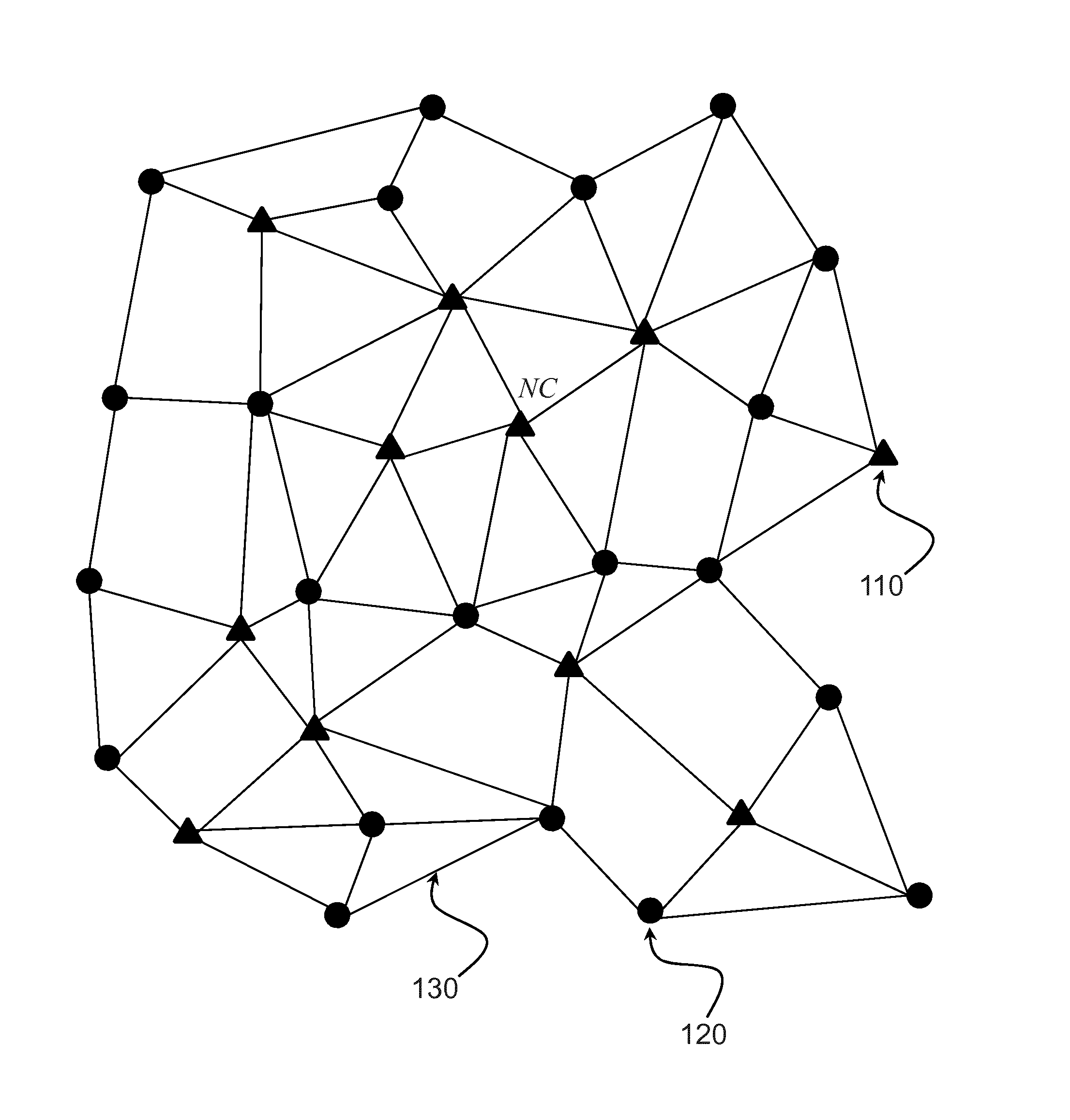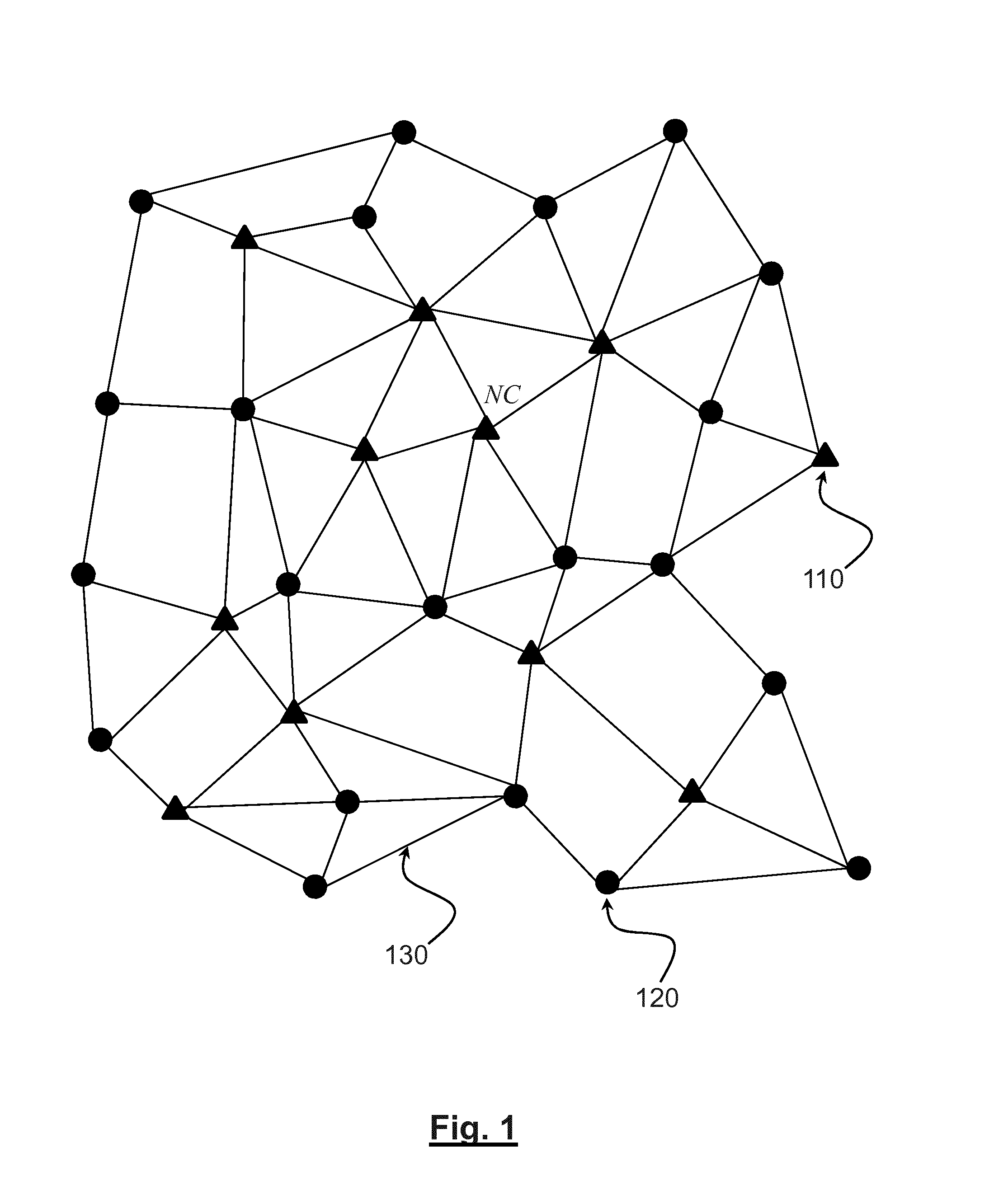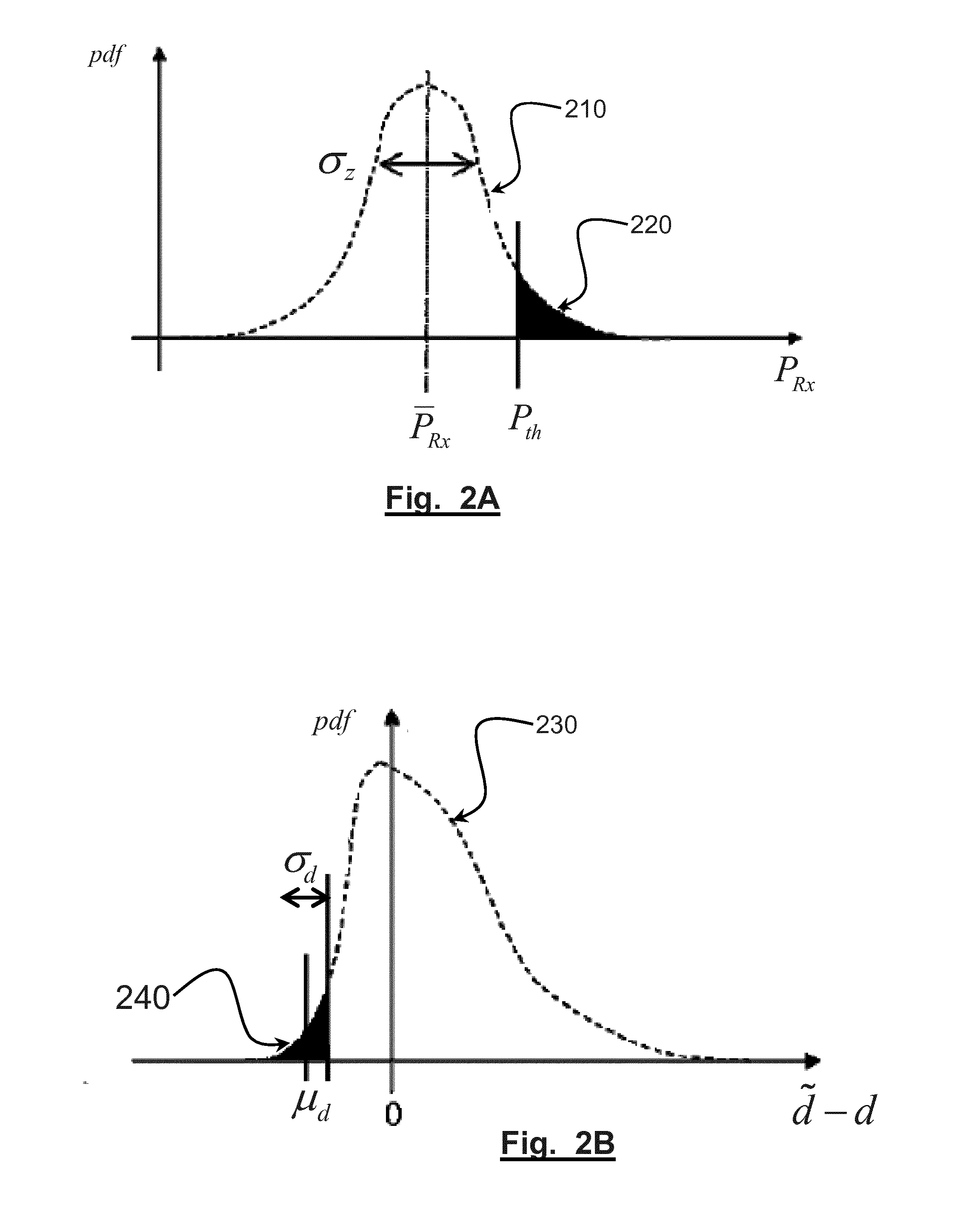Channel-type supervised node positioning method for a wireless network
a wireless network and wireless network technology, applied in the field of wireless sensor networks, can solve the problems of rare and severe limitations of the conventional wls positioning algorithm, receivers with limited sensitivity in practice, and rarely met in practi
- Summary
- Abstract
- Description
- Claims
- Application Information
AI Technical Summary
Benefits of technology
Problems solved by technology
Method used
Image
Examples
first embodiment
[0043]FIG. 3 diagrammatically represents a node positioning algorithm according to the invention.
[0044]The node positioning algorithm is performed after the network discovery has been completed. Preferably, the nodes are grouped into clusters and the node positioning algorithm is carried out individually on each cluster. Without loss of generality, we will assume in the following that the network contains only one cluster.
[0045]At step 310, each regular node i of the network measures the respective received signal strengths (RSSs) of the signals it respectively receives from its neighbors j.
[0046]At step 320, the propagation channels linking neighboring nodes are classified into different channel categories. For example, the channels can be classified into line of sight (LOS) and non line of sight (NLOS) categories as explained further below. Preferably, the channels are classified into three categories: LOS, NLOS and NLOS2 as defined above. Additional categories may be envisaged wi...
second embodiment
[0077]FIG. 5 illustrates a node positioning algorithm according to the invention.
[0078]It is assumed in this embodiment that the channels are classified according to the statistics of their CIRs as in the first variant described above, or that the channel classification is provided by a distinct and independent classifier.
[0079]Contrary to the first embodiment in which path loss parameters αLOS, αNLOS, αNLOS2, PL0,LOS, PL0,NLOS2, σLOS2, σNLOS2, σNLOS22 were assumed to be known a priori from the channel model, the present embodiment performs a blind estimation of at least some of these parameters, as explained hereinafter.
[0080]Steps 510, 520, 540, 550 are identical to steps 310, 320, 340, 340, and therefore their description will be omitted.
[0081]At step 530, the path loss parameters of LOS, NLOS and NLOS2 are initialized at predetermined values.
[0082]The distances estimates, {tilde over (d)}ij, are then first calculated in step 540 on basis of these initial values.
[0083]After the p...
third embodiment
[0088]FIG. 6 illustrates a node positioning algorithm according to the invention.
[0089]The third embodiment differs from the first in that the effects of sensitivity limitation of the receivers are now taken into account.
[0090]More specifically, steps 610 to 640 are identical to steps 310 to 340, respectively.
[0091]At step 645, however, the systematic biases on the distance estimates and the change of the distance variance terms, induced by the sensitivity limitation, are corrected.
[0092]Assuming the median estimator is used, it is recalled (see expression (5)) that, for a perfect receiver with infinite sensitivity (i.e. infinite detection threshold in dBm), the distance d can be estimated from received signal strength PRx:
{tilde over (d)}=exp(M) where
M=([PTx+GRx+GTx-PRx]-PL0)log(10)10α+log(d0)
[0093]For a real receiver having finite detection threshold Pth, only the detected received power below this threshold can be taken into account into the further ranging and positioning calcul...
PUM
 Login to View More
Login to View More Abstract
Description
Claims
Application Information
 Login to View More
Login to View More - R&D
- Intellectual Property
- Life Sciences
- Materials
- Tech Scout
- Unparalleled Data Quality
- Higher Quality Content
- 60% Fewer Hallucinations
Browse by: Latest US Patents, China's latest patents, Technical Efficacy Thesaurus, Application Domain, Technology Topic, Popular Technical Reports.
© 2025 PatSnap. All rights reserved.Legal|Privacy policy|Modern Slavery Act Transparency Statement|Sitemap|About US| Contact US: help@patsnap.com



